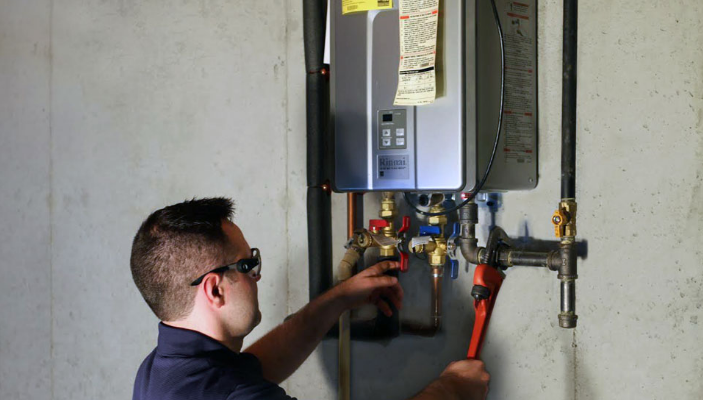This great article further down on the subject of How to Maintain a Hot Water Heater in a Few Simple Steps is quite attention-grabbing. Don't overlook it.

Hot water is vital for day-to-day convenience, whether it's for a refreshing shower or washing dishes. To guarantee your hot water system runs successfully and lasts longer, normal maintenance is key. This post provides functional suggestions and insights on how to preserve your home's warm water system to avoid disturbances and pricey repair work.
Intro
Preserving your home's warm water system might seem daunting, however with a few basic actions, you can ensure it runs efficiently for several years ahead. This overview covers whatever from recognizing your hot water system to DIY upkeep tips and understanding when to call specialist help.
Value of Maintaining Your Hot Water System
Normal maintenance not only expands the lifespan of your warm water system yet likewise guarantees it runs efficiently. Ignoring upkeep can result in reduced performance, higher energy expenses, and also early failing of the system.
Indicators Your Hot Water System Needs Maintenance
Understanding when your warm water system requires interest can stop significant issues. Watch out for indications such as irregular water temperature level, unusual noises from the heating unit, or corroded water.
Comprehending Your Warm Water System
Prior to diving right into upkeep tasks, it's useful to comprehend the standard parts of your warm water system. Generally, this includes the water heater itself, pipelines, anode poles, and temperature level controls.
Month-to-month Upkeep Tasks
Normal monthly checks can assist catch minor problems before they intensify.
Purging the Hot Water Heater
Purging your hot water heater gets rid of debris build-up, improving efficiency and prolonging its life.
Monitoring and Changing Anode Rods
Anode poles prevent corrosion inside the storage tank. Inspecting and changing them when broken is critical.
Inspecting and Adjusting Temperature Level Setups
Changing the temperature level setups ensures optimal performance and security.
Do It Yourself Tips for Upkeep
You can execute numerous maintenance jobs on your own to maintain your warm water system in top condition.
Checking for Leaks
On a regular basis evaluate pipelines and links for leakages, as these can lead to water damage and higher bills.
Evaluating Pressure Alleviation Valves
Examining the pressure relief valve guarantees it works properly and stops too much stress build-up.
Shielding Pipelines
Shielding warm water pipelines lowers warmth loss and can conserve power.
When to Call a Professional
While DIY maintenance is advantageous, some issues require professional knowledge.
Complicated Issues Requiring Specialist Assistance
Examples consist of significant leaks, electrical troubles, or if your hot water heater is regularly underperforming.
Routine Specialist Maintenance Benefits
Specialist maintenance can include detailed assessments, tune-ups, and guaranteeing conformity with security standards.
Verdict
Routine maintenance of your home's warm water system is important for performance, longevity, and expense financial savings. By complying with these pointers and understanding when to seek expert help, you can make certain a reputable supply of warm water without unforeseen disturbances.
Water Heater Maintenance Tips
Test the TPR Valve
Shut off the power and the cold-water supply valve. Place a bucket under the pipe connected to the temperature-pressure-release (TPR) valve on the top or side of the tank. (This valve opens if the tank pressure gets too high.) Lift the valve’s tab to let some water out, then let go. If water keeps flowing, drain the tank partway, unscrew the old valve with a pipe wrench, and install a new one. Check the Anode Rod
Put a hose to the tank’s drain cock and let out a few gallons of water. Now fit a 1 1/16-inch socket onto the rod’s hex head on top of the heater (or under its top plate) and unscrew the rod. If it’s less than ½ inch thick or coated with calcium, buy a new one, wrap its threads with Teflon tape, put it back in the tank, and tighten securely. Use this segmented rod if headroom above the tank is limited. Drain the Tank and Wash Out Sediment
Drain the remaining water in the tank into the bucket, then stir up the sediment on the tank’s bottom by briefly opening the cold-water supply valve. Drain and repeat until clean water comes out of the hose. Close the drain cock, refill the tank, and turn its power back on. Adjust the Temperature
Find the temperature dial on the side of the tank and unscrew its cover. Adjust the dial to 120 degrees using a flathead screwdriver. For every 10 degrees the temperature is lowered, you can expect to save up to 5 percent in energy costs. Turn the water heater off or the thermostat down to its lowest setting if you plan to be away from home for more than three days. Insulate the Pipes
Buy some self-sticking 3/8-inch-thick foam pipe insulation that matches the pipes’ diameter. Slide the foam over the hot-and cold-water pipes as far as you can reach. Insulating the cold-water pipe prevents condensation in summer. Peel the tape and squeeze the insulation closed. If the pipe is 6 inches or less from the flue, cover it with 1-inch-thick unfaced fiberglass pipe wrap. https://www.thisoldhouse.com/plumbing/21016402/how-to-maintain-a-water-heater

Hopefully you liked our post about How to Maintain a Hot Water Heater in a Few Simple Steps. Thanks a lot for taking the time to browse our blog. Sharing is nice. Helping people is fun. I cherish your readership.
Click For More Information